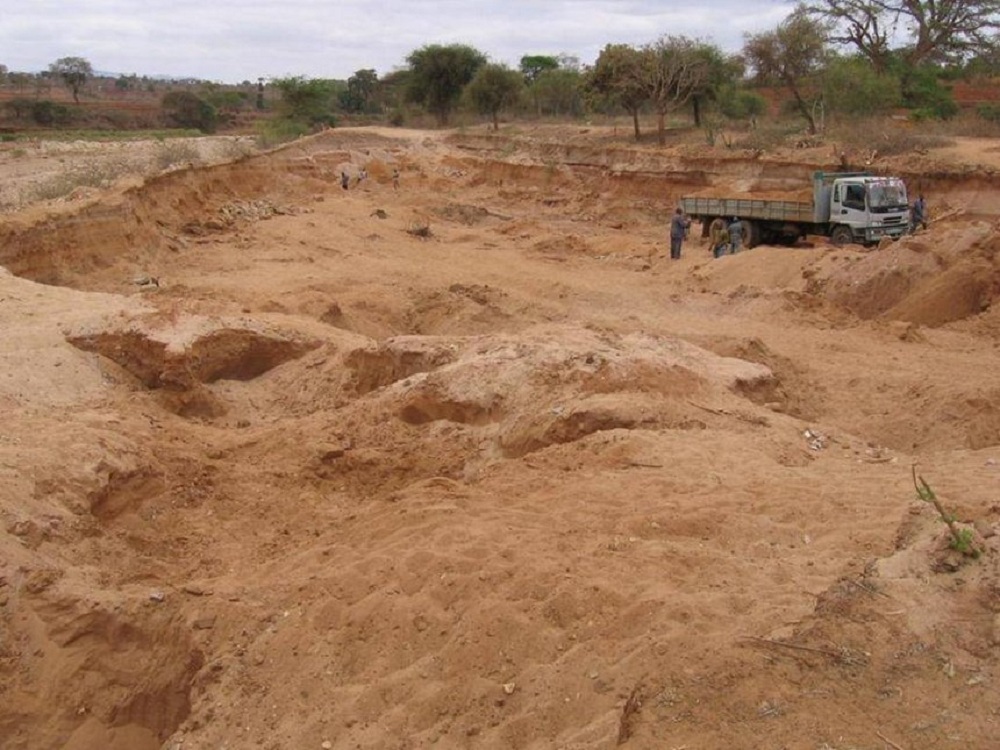Property developers in Nairobi are grappling with high cost of sand as prices hit an all-time high following a move by three counties to ban its harvesting to protect the environment.
Three counties which border Nairobi and are the sources of sand used in construction in the capital have placed a ban on sand harvesting to protect the environment.
The counties, namely Makueni, Machakos and Kajiado, said sand harvesters have been mining the commodity without regard to the environment.
Other counties that have banned sand harvesting or placed stricter control on the activity include Kitui.
“We saw it wise to ban harvesting of sand in Kajiado so that the county comes up with policies of how the industry can be well-managed.
“Sand harvesters have degraded our rivers for many years, we would not allow this to continue as we lose revenue,” Kajiado Governor Joseph ole Lenku said last month while issuing the directive.
The bans placed nearly a month ago have raised the cost of sand by at least 30% pushing property developers on the brink.
Twenty tons of sand is currently being sold at Ksh 40,000., up from Ksh 30,000 weeks ago.
On the other hand, 10 tons of sand is being sold at between Ksh 20,000 and Ksh 25,000.
The rise is the highest in recent times for the commodity that is an important construction ingredient.
Some property developers in the Nairobi and the suburbs have deferred work until supply of sand improves while others have switched to quarry dust with 20 tonnes costing Ksh 10,000.
“We were supposed to start the plastering of our houses a week ago but we cannot because of scarcity of sand,” James Kyalo, a contractor in Kitengela on the outskirts of Nairobi told Xinhua in a recent interview.
A four-storey block of flat he is building needs tonnes of sand, with the current prices nearly doubling their cost.
“The owner did the cost and decided to defer the work because even with the higher prices, one has to book and wait for some days before the sand is delivered,” he said.
Some of those building the houses are purely using dust mixed with cement to make joints or are mixing it with sand.
Joseph Mongare, a media worker who is building a house in Syokimau on the outskirts of Nairobi, said he had to turn to dust to continue with his work.
“I bought 20 tonnes of sand at Ksh 38,000 and 60 tonnes of dust, which I am mixing as I use. I thought of stopping the work to wait for sand but it did not make sense as that would have increased my costs in the long-term,” he said.
However, such practices compromise the quality of buildings as dust or its mixture with sand does not make stronger joints like pure sand.
“The problem with this development is that we are going to end up with many weak buildings or those whose quality is compromised because developers are building houses of up to seven floors using dust,” said Antony Kuyo, a real estate consultant with Avent Properties in Nairobi.
Kuyo noted that for developers who are not using dust and are building houses for sale, the high cost of sand would push up prices of properties.
“Developers would certainly seek to recover their costs and they would pass this to buyers,” he said.
He added that while protection of environment is important, he said measures taken should not be drastic to destabilize other sectors.
“For many years sand harvesting has been haphazard and it is a welcome move to regulate it.
“Counties can impose tariffs or even formulate regulations to control mining in rivers but a total ban is not the way to go,” he said.
A 2014 UN report shows that globally, 40 billion tonnes of sand and gravel are extracted every year.
READ: How Matiba was pushed into launching own newspaper
However, legal sand extraction industry is worth Ksh 7 trillion while a huge section is unaccounted for.
Besides in building and construction, sand is also used in the manufacture of microchips and detergents. However, the bulk is used in the construction industry.
Environmentalists note that excessive sand harvesting destroys riparian vegetation, inhibits flow of water along the river, erodes the water-holding capacity of the riverbed and damages ecosystems.













Leave a comment